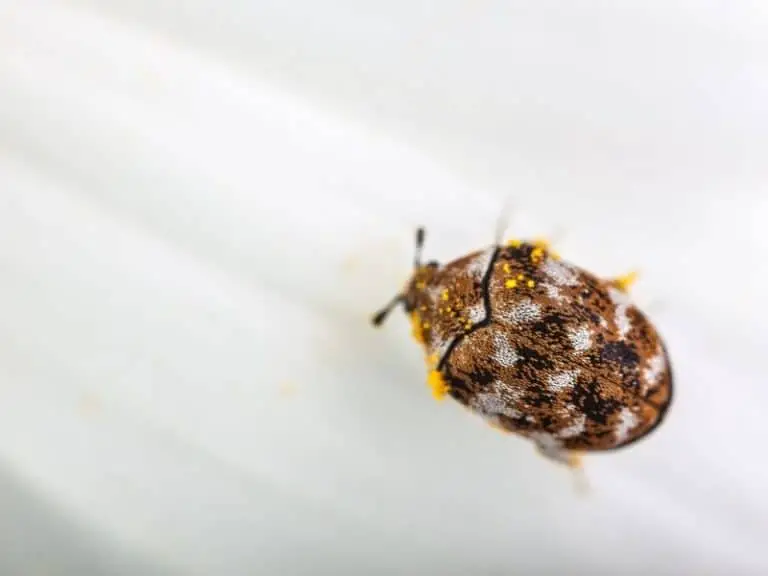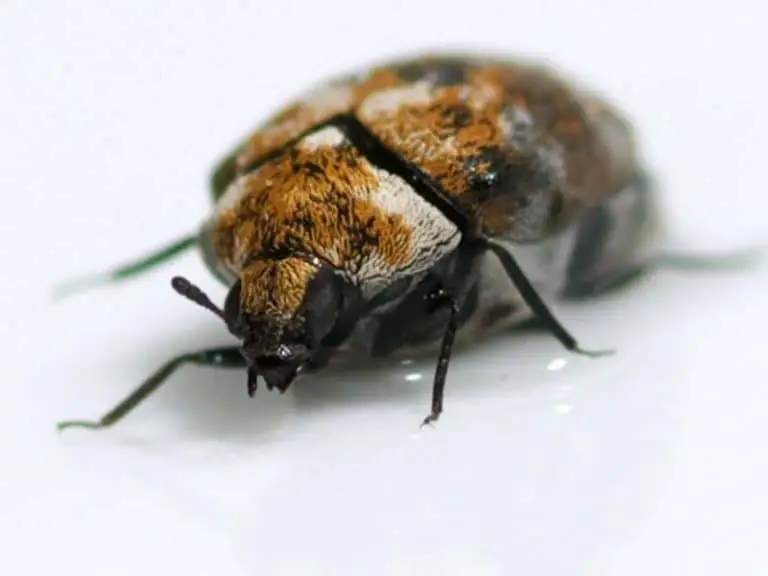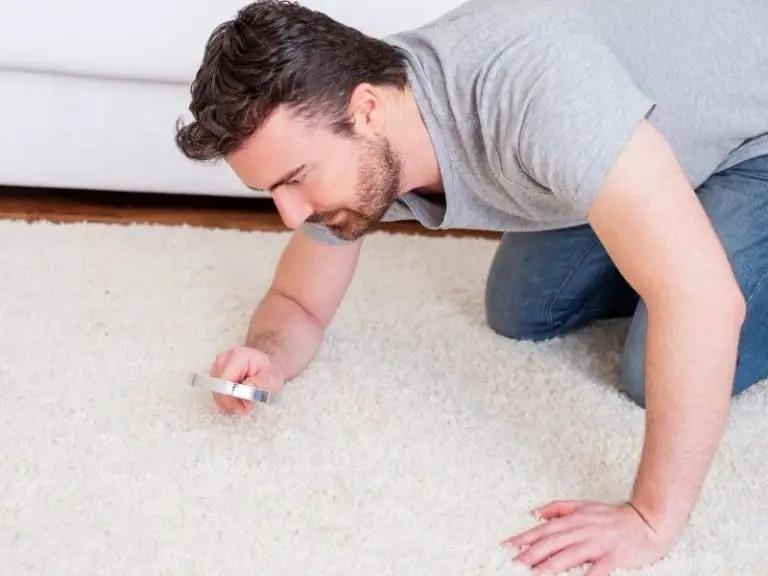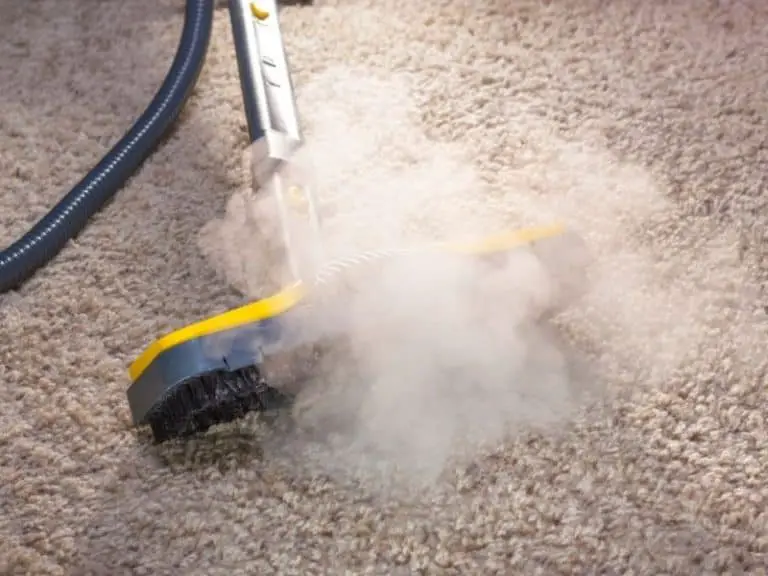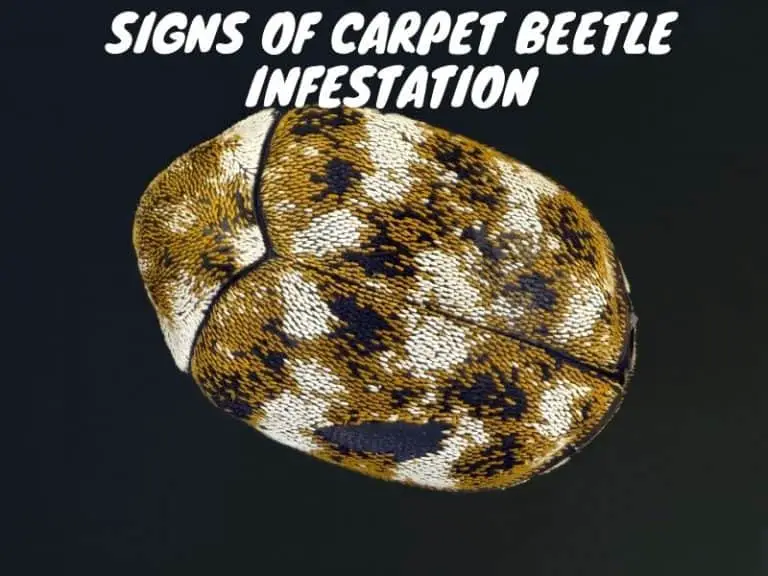How To Quickly Find the Source of Carpet Beetles
To put the infestation to an end, you should find the source of carpet beetles. Otherwise, carpet beetle eggs will keep on hatching, and larvae carpet beetles will keep on maturing until they are capable of mating. Especially if you wish to deal with the problem through the DIY route, identifying the potential source is a must.
Knowing what carpet beetles eat is the key to finding their source. Larvae carpet beetles eat clothes, carpets, decors, and others with natural fibers or animal products. Carpet beetles can also be in areas with food, like the attic, basement, pantry, kitchen, ducts, and wall and ceiling voids.
So, are you on the hunt for an answer to the question “how do you find the source of carpet beetles?”
Read on. Below you will learn how.
Getting Inside the Home
Any infestation begins with pests getting inside the home. Needless to say, your problem with carpet beetles started with adult carpet beetles, which usually reside outdoors, ending up indoors to lay some eggs.
It doesn’t take a lot of carpet beetles to start an infestation. A single female adult carpet beetle that’s pregnant, in most cases, is more than enough to make an infestation happen.
It’s because a female adult carpet beetle can lay 35 to 100 eggs at once — sometimes more than 100 eggs!
Carpet beetle eggs take 10 to 20 days to hatch. On the other hand, larvae carpet beetles take anywhere from nine months to a couple of years to mature and mate with one another to keep their numbers up.
Young carpet beetles are the ones that can wreak havoc on your indoor living.
That’s because they are those that like to chew on your clothes and carpet as well as cause skin redness and itchiness (carpet beetle dermatitis).
If it can take years before they mature and fly outside where they belong, then they can bug you for a really long time!
Here’s a couple of ways how a carpet beetle infestation can start and ruin your belongings.
By Inviting Themselves In
Adult carpet beetles can get inside your home by flying through open windows or doors.
They can do the same by crawling through cracks and openings. Once inside, they will lay their eggs.
After laying their eggs, they will go back outside as it’s there where they have access to pollen and nectar, their favorite foods.
By Getting Invited in Without Your Knowledge
Just like bed bugs, larvae carpet beetles like to hide in old pieces of furniture. Most of them love camping out in upholstered ones.

This is why it can be easy for an infestation to start if you love buying and installing used furniture. Carpet beetles may also end up indoors by means of plants that you decorate your interiors with.
Once several carpet beetle eggs or larvae carpet beetles are introduced into your home, it is very much likely for an infestation to start. Springing into action without delay is a definite must.
Unfortunately, it’s not all the time that learning about the presence of carpet beetles happens right away.
In many cases, homeowners realize that there’s a problem only when larvae carpet beetles have already damaged a lot of their belongings. This is especially true for those whose skin does not react unfavorably to those hairy pests.
So, where do carpet beetles come from? Initially, the problem can be blamed on adult carpet beetles, especially pregnant females, or larvae carpet beetles that wind up inside the home.
Once the infestation has started, however, the source can be traced back to areas that attract larvae carpet beetles, and keep them alive, too.
Your Home is a Big Food Source
To find out the exact source of larvae carpet beetles taking over your home, you must be able to answer the question: “what are carpet beetles attracted to?”
Knowing what they are can make it easier for you to figure out where in your home you should start the DIY extermination process.
Quite frankly, to learn where the seemingly unlimited supply of those hairy critters is hiding, you have to know the reason why larvae carpet beetles prefer to stay indoors.
The answer is none other than the fact that your home provides them with a steady dose of their favorite treats: natural fiber.
So, in other words, the more belongings you have that are out of the likes of wool, silk, hemp and cotton, the higher the chance of you ending up with a carpet beetle problem.
Hair is another favorite food of larvae carpet beetles. Yes, while you are sleeping, some of them could crawl on you to have a taste of your mane. Similarly, they also love snacking on the fur of your furry pets.
By the way, carpet beetles are attracted to animal-based items, too. They include fur coats, leather purses, and shoes.
They also love down or feather pillows. This is why you should try to turn your back on these products. Switch to synthetic counterparts, especially if it seems like everyone in your area is complaining of carpet beetles.
Living in a cluttered home that you do not clean regularly can also encourage larvae carpet beetles to thrive. That’s because they also love feasting on lint, dead insects, and scraps of food.
It’s for this reason why carpet beetles may also raid pantries where they can enjoy grains, flour, crackers, dried fruits, and many other irresistible goodies.
Once you know the things in your home that makes staying in it a delightful experience for larvae carpet beetles, you will find it easier to hunt them down and get rid of the infestation using some home remedies.
Places to Check For Sources of Carpet Beetles
Are you keyed up to look for carpet beetles residing in your home so that you can start to get rid of them? Before you do that, there is one very important step that you need to take first.
And that is to get rid of as much clutter as you can. This can help increase your DIY extermination success rate, and it’s for a couple of reasons:
- It reduces the number of potential hiding places, thereby making it easier to find them.
- It gets rid of dead insects, loose human and pet hair, lint, food scraps, and others that they love to eat.
Eliminating clutter, as a matter of fact, is also the very first step that needs to be taken when it comes to getting rid of other common household pests via the DIY way.
Once your home is as clutter-free as it can be, it’s time to arm yourself with a spray bottle containing diluted vinegar or essential oil, vacuum cleaner, or a handheld steam cleaner.
Read on to have an idea of where in your home you will find the majority of those pesky larvae carpet beetles.
Carpets and Rugs
Because of what they are called, it’s quite clear what larvae carpet beetles love to eat first and foremost.
And it’s none other than your carpet. It’s because of this why you should begin hunting them by closely inspecting your carpet.
It can be an arduous task if your entire home is carpeted. Arming yourself with a powerful vacuum cleaner is a great idea.
It’s not just carpets that carpet beetles tend to munch on. They also love rugs so dearly. Remember to thoroughly check the edges and undersides when inspecting your carpets and rugs. It’s in those areas where they usually hide.
Upholstered Furniture
Just like bed bugs, carpet beetles love hanging out where there are upholstered furniture pieces.
It’s not just the fabric that they love snacking on, but also the stuffing. There’s no need to worry if the stuffing is polyurethane foam. Larvae carpet beetles hate those.
However, it’s a completely different tale if the stuffing is natural, like wool or cotton.
Many love upholstered furniture with leather. It’s for the fact that the material is both lovely and durable. Unfortunately, especially if it’s genuine leather, it serves as a yummy treat for larvae carpet beetles.
Bed Pillows and Mattresses
Other than bed bugs, your bed can also serve as the headquarters of larvae carpet beetles. There are many things about it that those crawling pests love.
Do you love the way your bed linen out of 100% natural fibers feels against your skin? Well, carpet beetles also love the way it feels in their tiny mouths!
If your pillows are filled with down, feather or any other material obtained from animals, they can attract larvae carpet beetles.
And if there are holes in your pillows, chances are that some of those carpet beetles are hiding in them. It’s a great idea to switch to pillows devoid of natural fillings, such as memory foam pillows.
Cabinets and Closets
Someone who’s wearing clothes with a lot of holes in them is likely to share his or her home with larvae carpet beetles. Those bugs cannot say no to clothes, especially if they contain natural fibers.
This is why you should remember to inspect your cabinets and closets. It’s for certain that some carpet beetles will be hanging out in them.
By the way, to remove carpet beetles from your clothes, all you have to do is wash them in hot water for at least half an hour.
The problem is that most clothes that are out of natural fibers are not meant to be washed in hot water.
A Laundry Hamper
There is no denying that clothes that are out of natural fibers are fantastic food products for larvae carpet beetles.
If your clothes are stained with food and drinks, then they will love eating them even more!
It’s due to this why you should include your hamper on the list of areas or things in your home to inspect.
To keep your hamper from being a carpet beetle hotspot, consider washing your clothes as soon as possible.
Otherwise, it is more likely for them to end up more damaged than your clean clothes as their smell can attract larvae carpet beetles.
Mounted Animals
You may be into hunting or taxidermy or your home may be inspired by a log cabin, and that is why you have some mounted animals.
Unfortunately, these things that you regard as trophies or decorations can encourage the multiplication of carpet beetles inside your home. That’s because the hair and skin in them are appealing to those pests.
It’s not just your proudly displayed mounted animals that can attract and feed larvae carpet beetles, but also those that are stashed somewhere in your home, such as the attic or basement, which we will talk about next.
Attic and Basement
The importance of getting rid of clutter as an integral part of DIY carpet beetle extermination cannot be stressed enough.
Since most attics and basements are dark and cluttered, it doesn’t really come as a big surprise why they make for fantastic hiding places for larvae carpet beetles.
Many things kept in attics and basements can provide carpet beetles with sustenance. Some of them include old clothes, pillows, mattresses, stuffed toys, and leather items.
The presence of dead insects and other animals (which we will also mention a couple more times later) makes these areas superb hiding places for larvae carpet beetles.
Garage
A lot of homeowners think about doing an ocular inspection of various areas inside their homes when asked: “how do you find the source of carpet beetles?” Well, it’s not just indoors that you should spend time on but also outdoors.
Case in point: the garage.
Just like the attic and basement, a garage is usually packed with old and unused items. It’s because of this reason why it’s something that can be a top source of carpet beetles.
Once they run out of stuff to eat in the garage, it is very much likely for carpet beetles to head indoors and wreak havoc on your belongings there.
Vents and Ducts
Earlier, we talked about how mounted animals can provide larvae carpet beetles with food.
Decorative dead animals are not the only things that carpet beetles love eating, but also dead animals in your home whose deaths are accidental.
Some examples are those that got trapped in vents and ducts and then starved to death.
This is why it’s a good idea to examine the vents and ducts. If dead animals are present, which will surely alert your nose, you should remove them to make it easier to get rid of carpet beetles without contacting professional exterminators.
In some instances, it requires getting in touch with HVAC experts for a more thorough inspection and cleaning.
Wall or Ceiling Void
It is also possible for some animals to end up trapped and dead in the empty spaces in the walls or ceiling. And when that happens, larvae carpet beetles may feast on them.
But if there are no holes or openings around, it’s unlikely to happen — they will simply look for food sources that are more accessible to them.
Repair anything that can cause animals to get trapped inside wall or ceiling voids and starve to death. It’s effective for fending off not only carpet beetles but also a bunch of other pests that can mess up your life.
Pantry
Believe it or not, larvae carpet beetles also eat some of the foods that you eat. So, in other words, it’s not just your carpet and clothes that are in danger, but also your meals.
Some of the human foods that carpet beetles love can be found in the panty.
Common examples are grains, cereals, crackers, pasta, and seeds. They also love feasting on flour. It’s for this reason why you can get your hands on pest traps for catching carpet beetles, moths, ants, and many other crawling and flying insects that may infest pantries.
Kitchen
Everyone knows that cockroaches and ants are some of the pests that love to hang around in the kitchen the most. It’s because there are plenty of spilled foods or food scraps available for them to enjoy.
Larvae carpet beetles can also overrun your kitchen, especially if it seems like they cannot find food elsewhere in your home.
When getting rid of carpet beetles using home remedies, remember to spend plenty of time in the kitchen. You should also keep it as clean and sanitized as possible to keep a reinfestation from happening.
Just Before You Look for Source of Carpet Beetles
How do you find the source of carpet beetles? Well, knowing what they eat is how. Once you are aware of the common food sources for larvae carpet beetles, finding where they are in your home should become easier and quicker.
After successfully ridding your home of carpet beetles, it’s a must that you take the steps necessary to keep them from coming back and starting an infestation all over again.
Some of the things that you may do as preventive measures include keeping your home clutter-free and replacing items out of natural fibers with synthetic ones.
Medical Disclaimer: TheHomePestControl is a digital publisher and does not offer personal health or medical advice. The contents of this website are not intended to substitute for professional medical advice, diagnosis, or treatment.
Affiliate Disclaimer: As an Amazon Associate, I earn from qualifying purchases made on our website. If you make a purchase through links from this website, I may earn a commission at no additional cost to you.


